- DHHS data during the Covid-19 pandemic have been questionable, to say the least
- From late 2021 to the present, the proportion of new Covid cases to individuals considered fully vaccinated kept rising till DHHS data showed it had become a majority of new cases
- In subsequent reports, DHHS has stopped showing post-vaccination infections
I and others have frequently criticized the slipshod data handling at the North Carolina Department of Health and Human Services (DHHS) since the politicization of Covid-19 began. Some of the more egregious include:
- Failure to distinguish between hospitalizations and deaths for Covid (the virus is what caused someone to need hospitalization or to die) or with Covid (a person was admitted to the hospital for some other reason, including an outpatient procedure, and as part of the admission process was surprised to test positive for Covid, or a person who died also had an unrelated positive test for Covid) — at one point last winter, hospitalizations with Covid made up 60% of “Covid hospitalizations” at UNC Health (see my post, “Fell off a ladder and came down with Covid“)
- The nation’s most delinquent reporting of deaths data to the Centers for Disease Control and Prevention — months behind other states, a delinquency that, if one assumes Gov. Roy Cooper’s extreme emergency orders were actually done in good faith to prevent death, arguably led to more preventable but non-Covid deaths
- Failure to account for natural immunity even as the governor and agency secretaries force government employees to receive emergency-authorized vaccinations at the cost of their jobs and pressure businesses to follow suit — when the ostensible public-health rationale for forcing vaccination was more than satisfied by anyone who had recovered from a Covid infection and therefore had natural immunity, the stronger form of immunity as affirmed by over 150 research studies, against future infection
- Constant revisions of data months and even over a year after the fact
- Sudden data dumps that induce media to report alarming “spikes” and give the governor cover for breaking his pledge to relax restrictions when Covid metrics decline
Very recently DHHS has quietly stopped reporting certain data that are important to our understanding of Covid risks — but increasingly embarrassing to the political responses and orders by Gov. Cooper. Once again, politics wins out.
July 2021: “Unvaccinated people account for 99% of the state’s Covid-19 cases”
The idea that the unvaccinated accounted for 99% of the state’s cases was a talking point that emerged in late spring 2021, as the governor and then-DHHS head Mandy Cohen promoted voluntary vaccination. It was consistent with messaging from the Biden administration and public expectations about these vaccines and vaccination in general.
Nevertheless, when DHHS officials were telling media in late July 2021 that “unvaccinated people account for 99 percent of the state’s COVID-19 cases since May,” their own data told them it wasn’t true. This graph is from the agency’s weekly Respiratory Surveillance survey for the week of Sept. 5–11, 2021; it shows that by late July cases to vaccinated individuals hovered close to 20%. Also, as will become important shortly afterward — when Cooper and Pres. Biden begin ordering mandatory vaccination — there is no distinguishing in the “unvaccinated” category between those who have had prior cases and therefore stronger, more durable natural immunity.
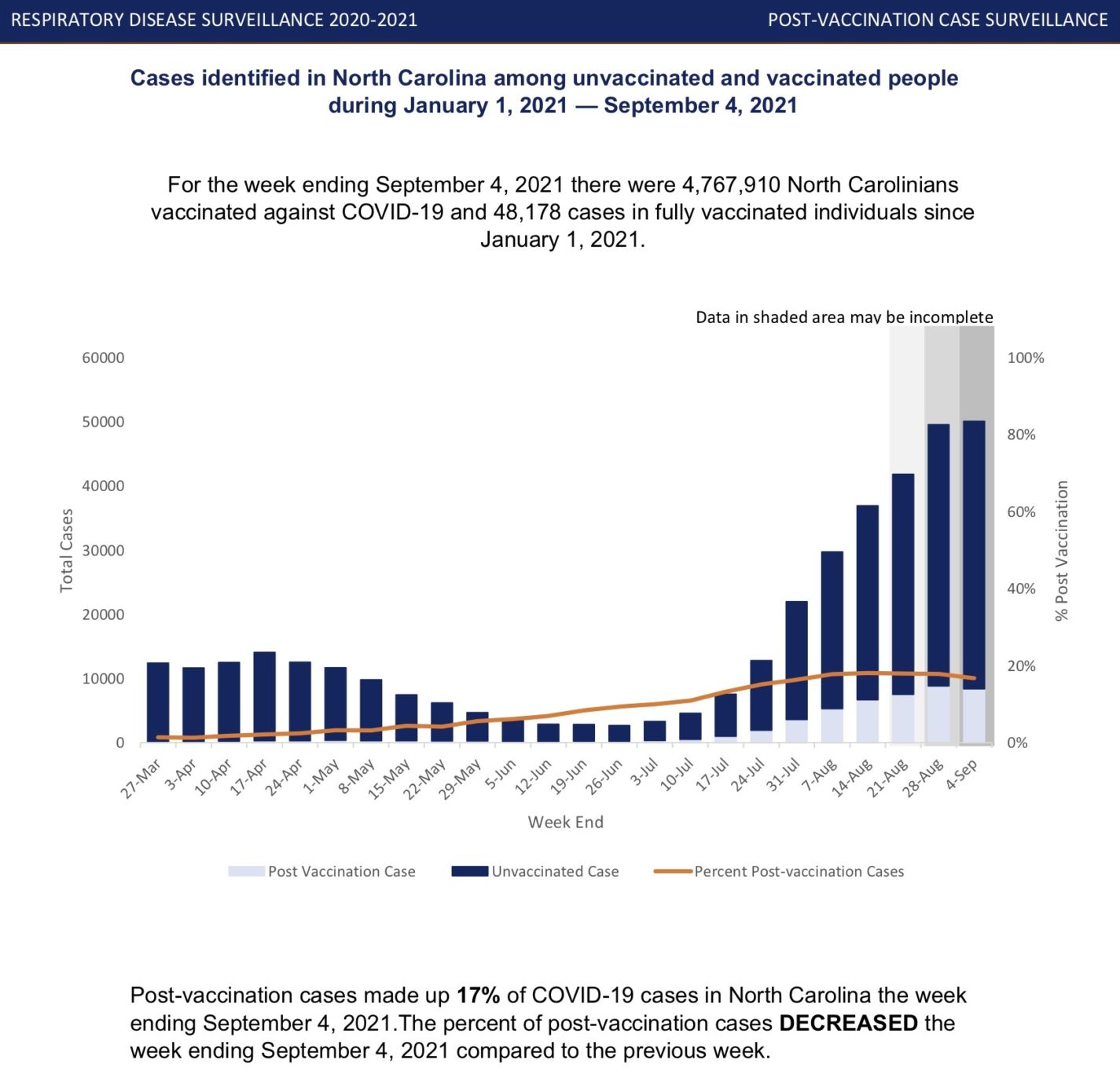
Nevertheless, on Oct. 4, 2021, DHHS issued a report on historical reinfections and then began tracking that statistic. This number (with some caveats) could be used as an indicator of the strength of natural immunity, since it showed how many people with natural immunity nevertheless developed a subsequent case. Adding the previously unknown reinfections data to the already known post-vaccination infections data, the statistic allowed for apples-to-apples comparisons of the relative strengths of the vaccines and natural immunity, with North Carolina’s results being in keeping with research expectations. See discussion here. I began tracking those comparisons in subsequent updates of the NC Threat-Free Index; see, e.g., the “Immunity, protection, post-vaccination infections, and reinfections” section of the last report.
This chart is from that DHHS report, “Historical Reinfection Data: March 1, 2020 – September 20, 2021. Notice that DHHS reported 10,812 reinfections through Sept. 20, 2021, and about 500 in the final week:
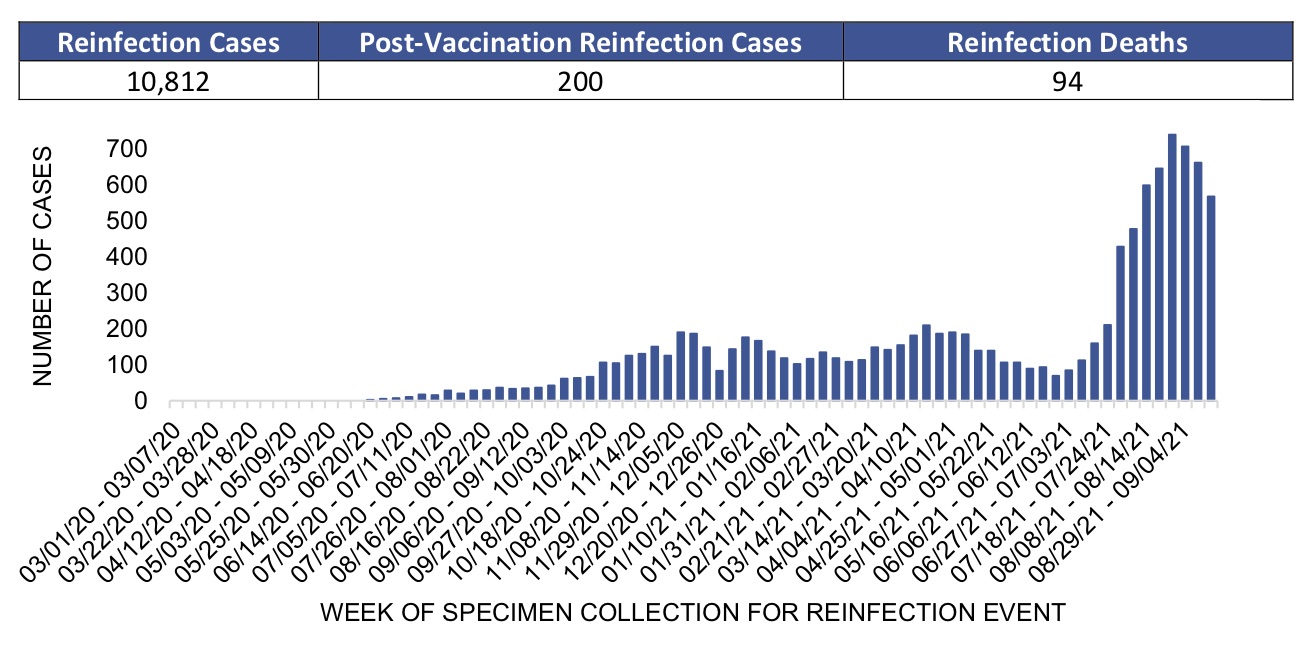
DHHS pulled that report on April 13, 2022. Here is most recent DHHS count of reinfections on the week ending Sept. 18, 2021 (see the highlighted box in the bottom right corner; it’s three — which is not quite the 500 previously reported):
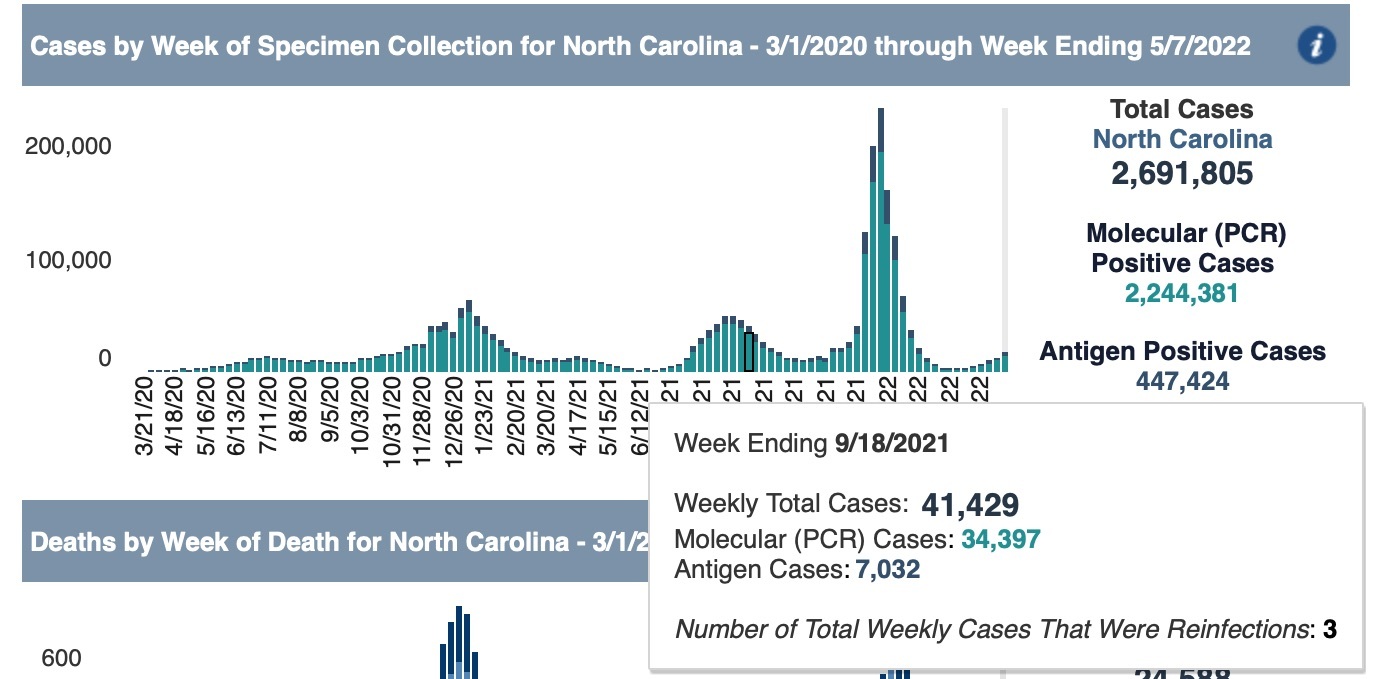
Current DHHS numbers now show 44 reinfections total though Sept. 25, 2021.
Jan. 4, 2022: “Pandemic of the unvaccinated”
At year’s end, the Omicron variant of Covid was spreading and the efficacy of the vaccinations was noticeably short of public expectations and political promises. Here is the DHHS chart from its Jan. 1–8 survey:
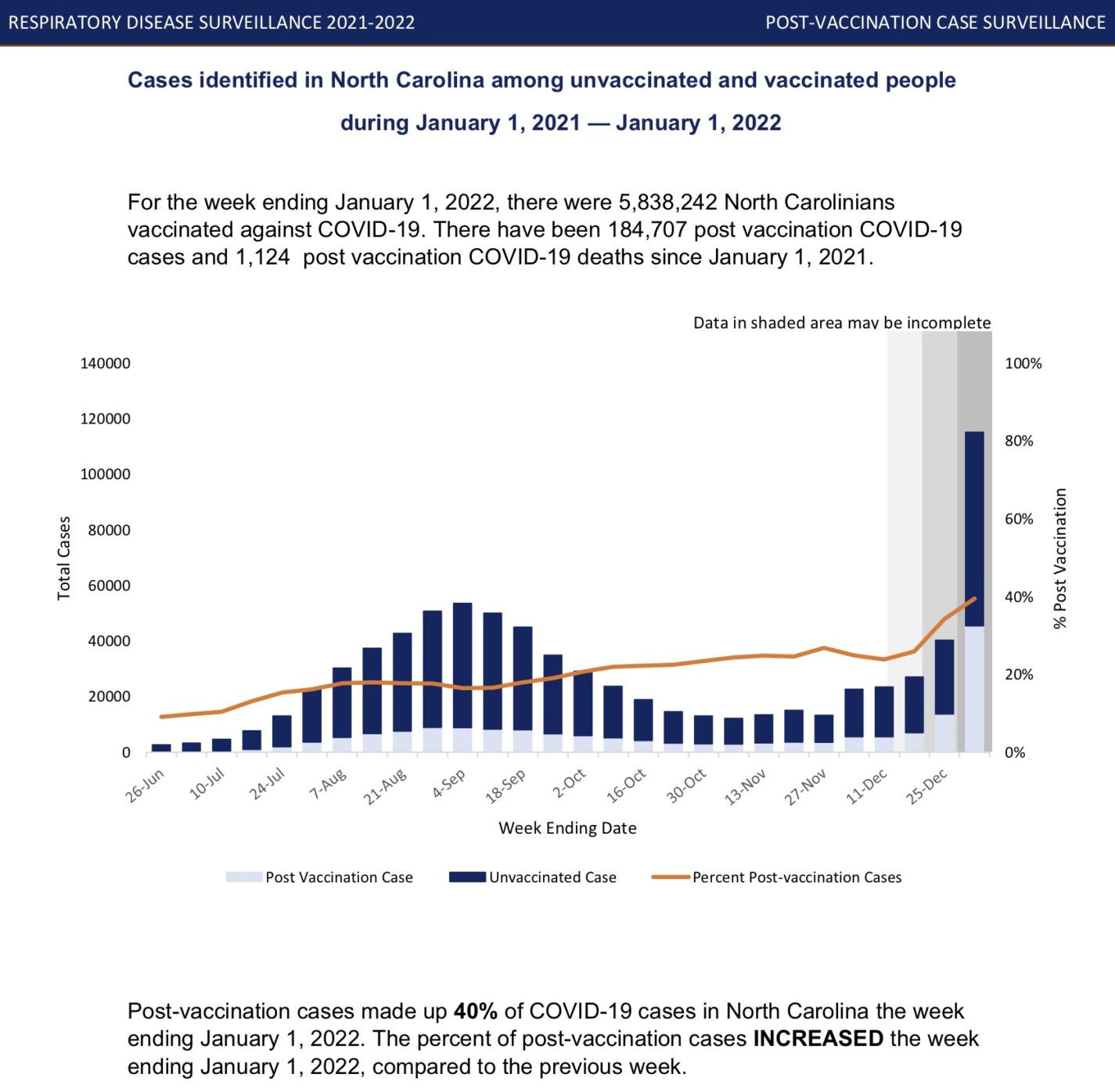
From that chart and data as provided by DHHS at the time, I was able to chart the different contributions of the three different populations of interest.
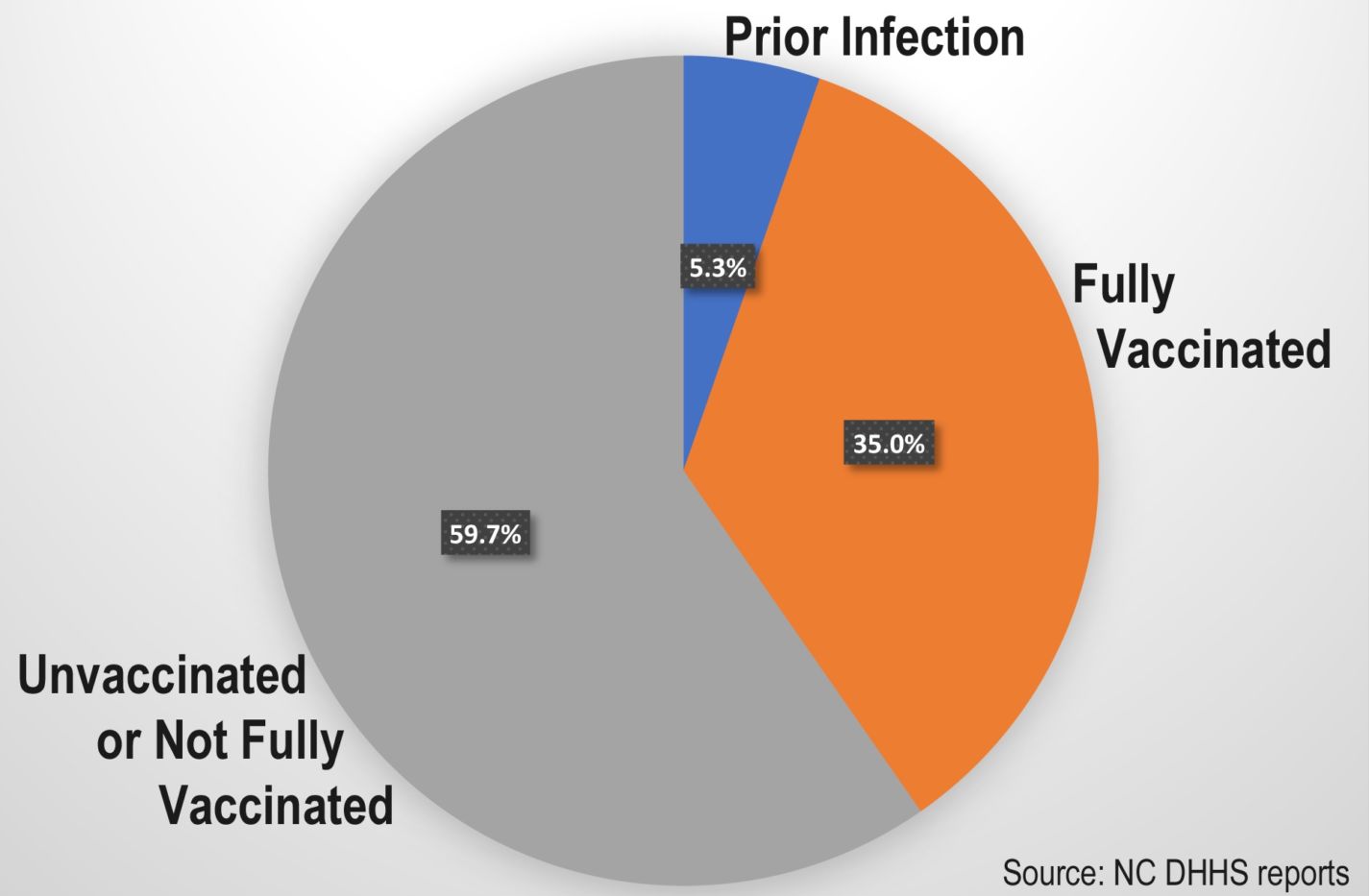
Biden’s vaccine mandate, meanwhile, was under a court challenge it would eventually lose. It was around this time that the CDC, DHHS, Cooper, Cohen, and media began to use this talking point from Biden: “This continues to be a pandemic of the unvaccinated.” But DHHS statistics were increasingly showing the opposite (see the discussion under the graph):
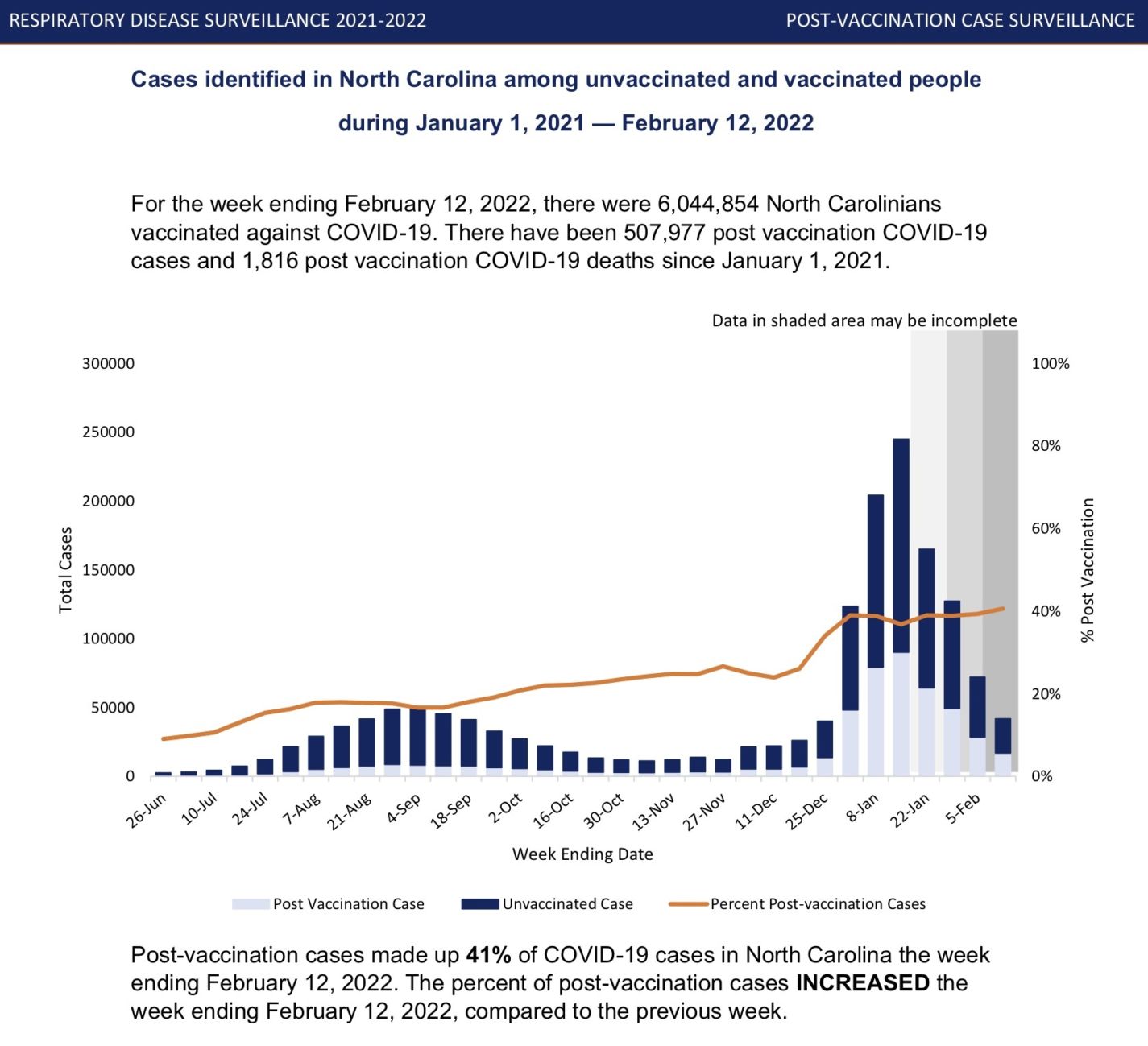
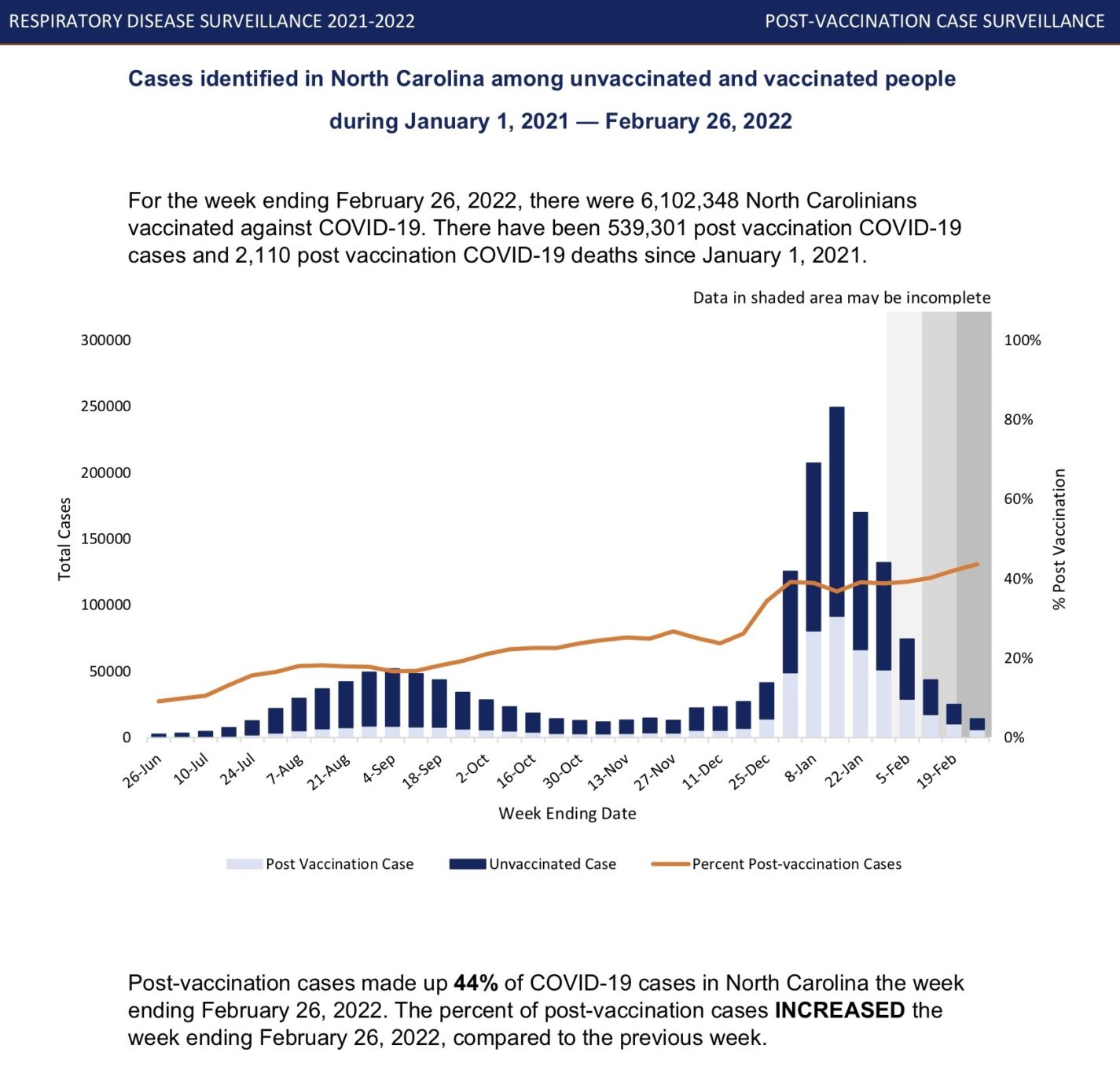
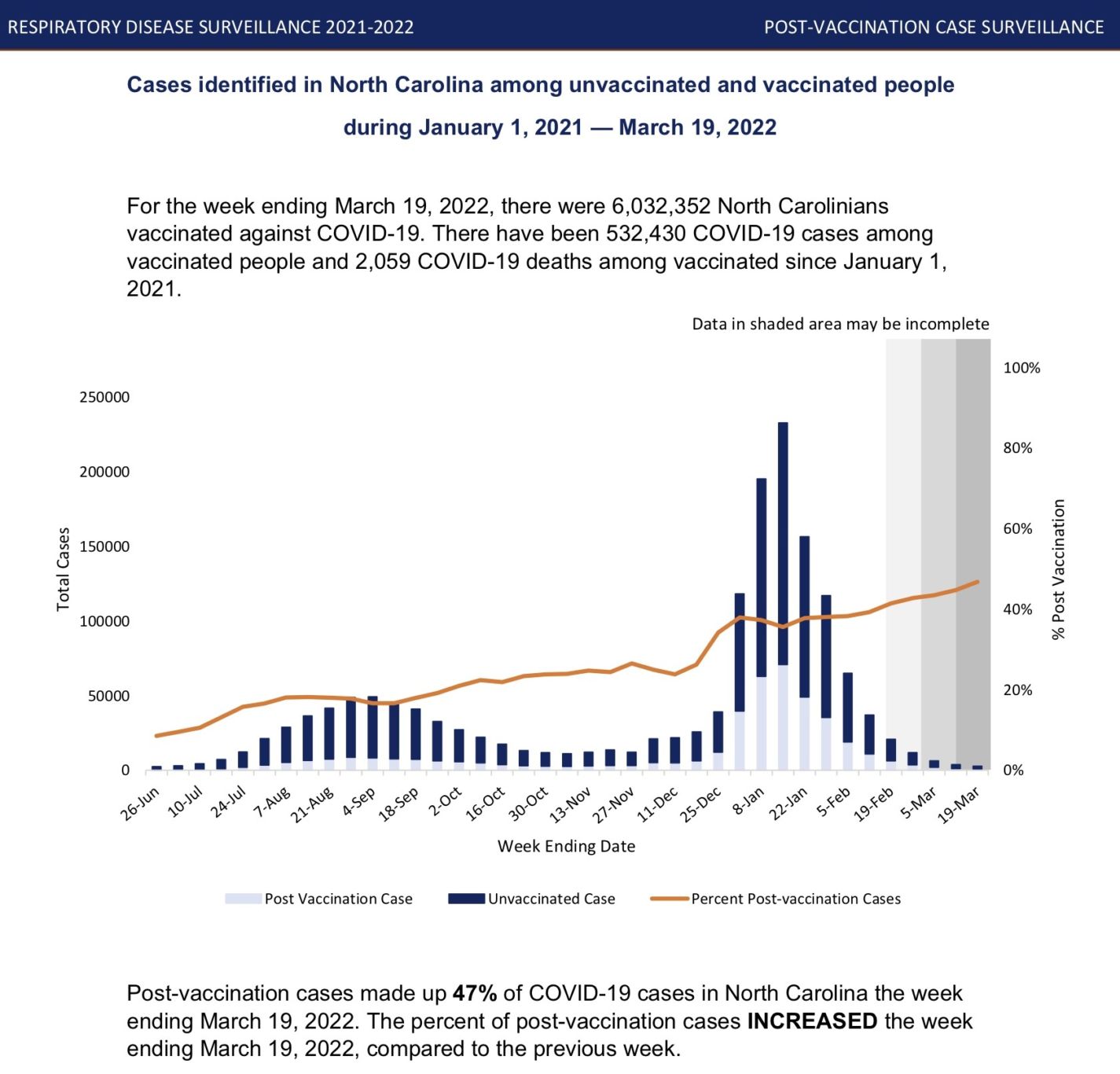
By this time, DHHS was reporting that proportion of new cases to fully vaccinated individuals had neared 50%. But according to the numbers accompanying those reports, nearly 56% of new cases in the previous month were to the fully vaccinated. Less than 8% of new cases came to those with prior Covid infections who were not fully vaccinated.
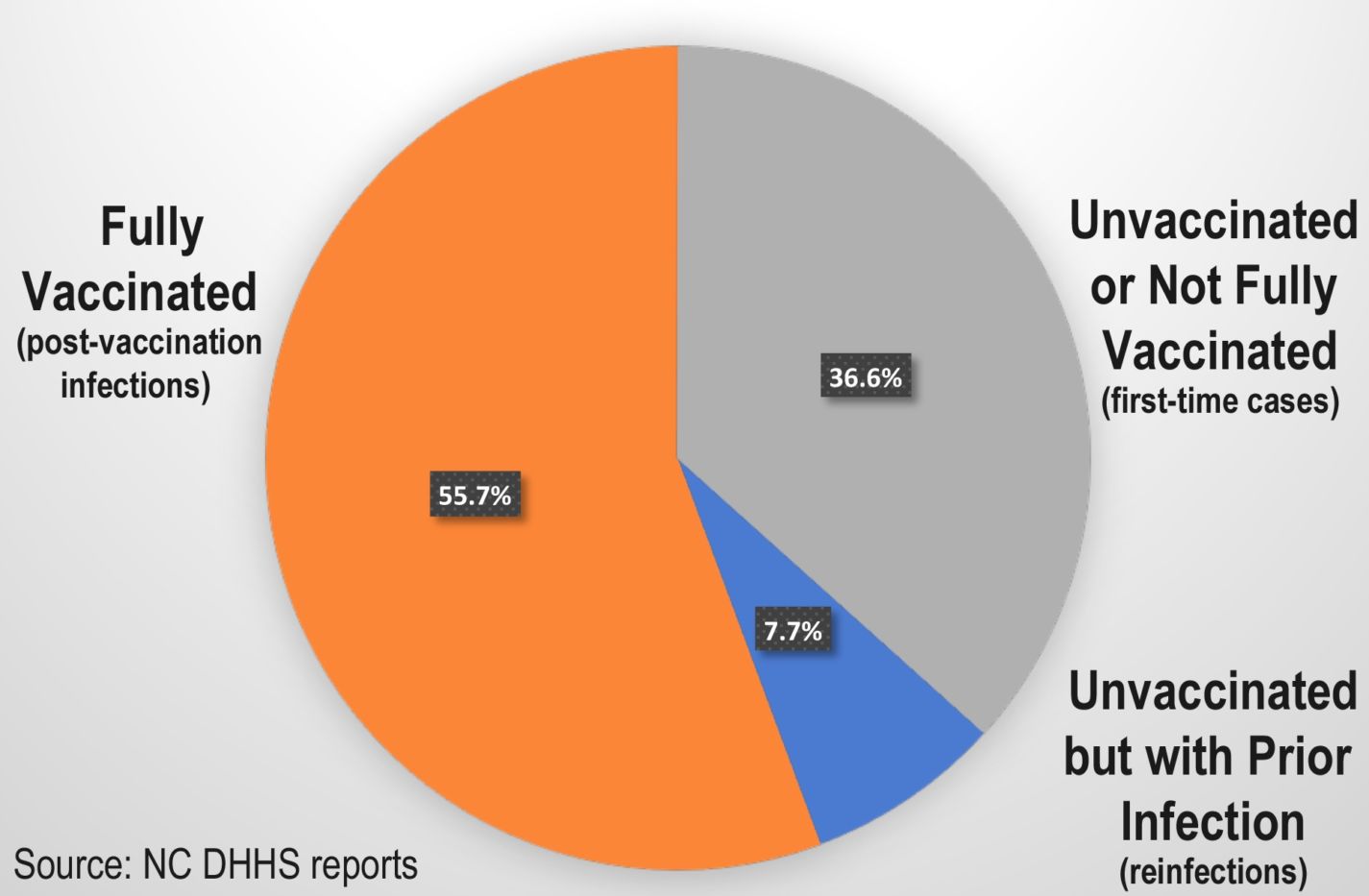
By then even the CDC was admitting the natural immunity from a prior infection of Covid-19 provided significantly stronger protection against the Delta variant than that offered by the current vaccines. The response among government and public health officials has been to promote boosters, and then a booster to follow the booster.
April 2022: Pull the slides
Speaking of boosters, for the next report (April 3–9), DHHS changed the report slide to reflect those:
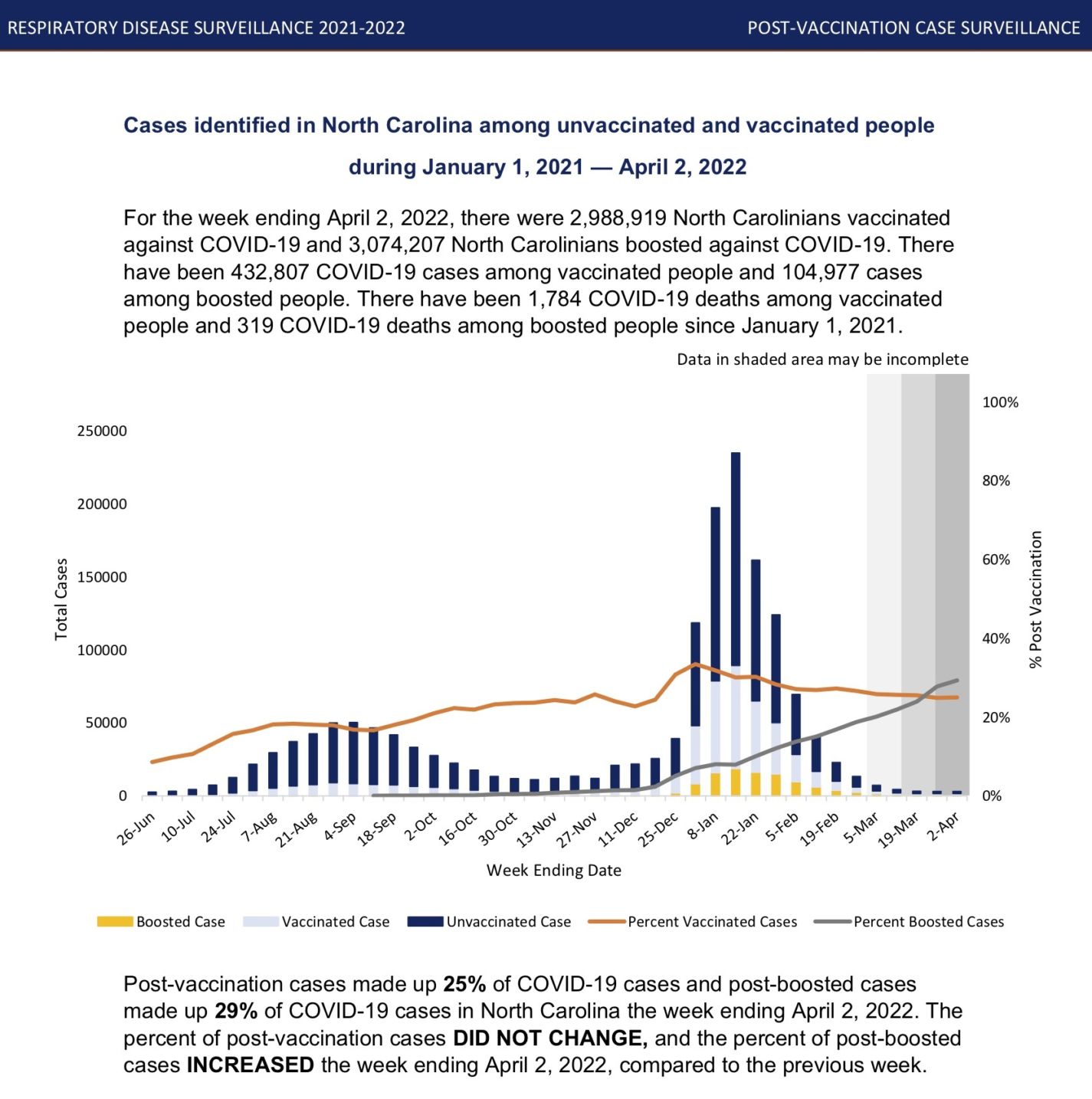
These data also meant something else: 54% of new cases had occurred to individuals fully vaccinated or boosted.
Current reports from DHHS no longer contain this slide at all. Consequently, North Carolinians no longer have an idea of how those things are tracking, but any potential political embarrassment is negated.







